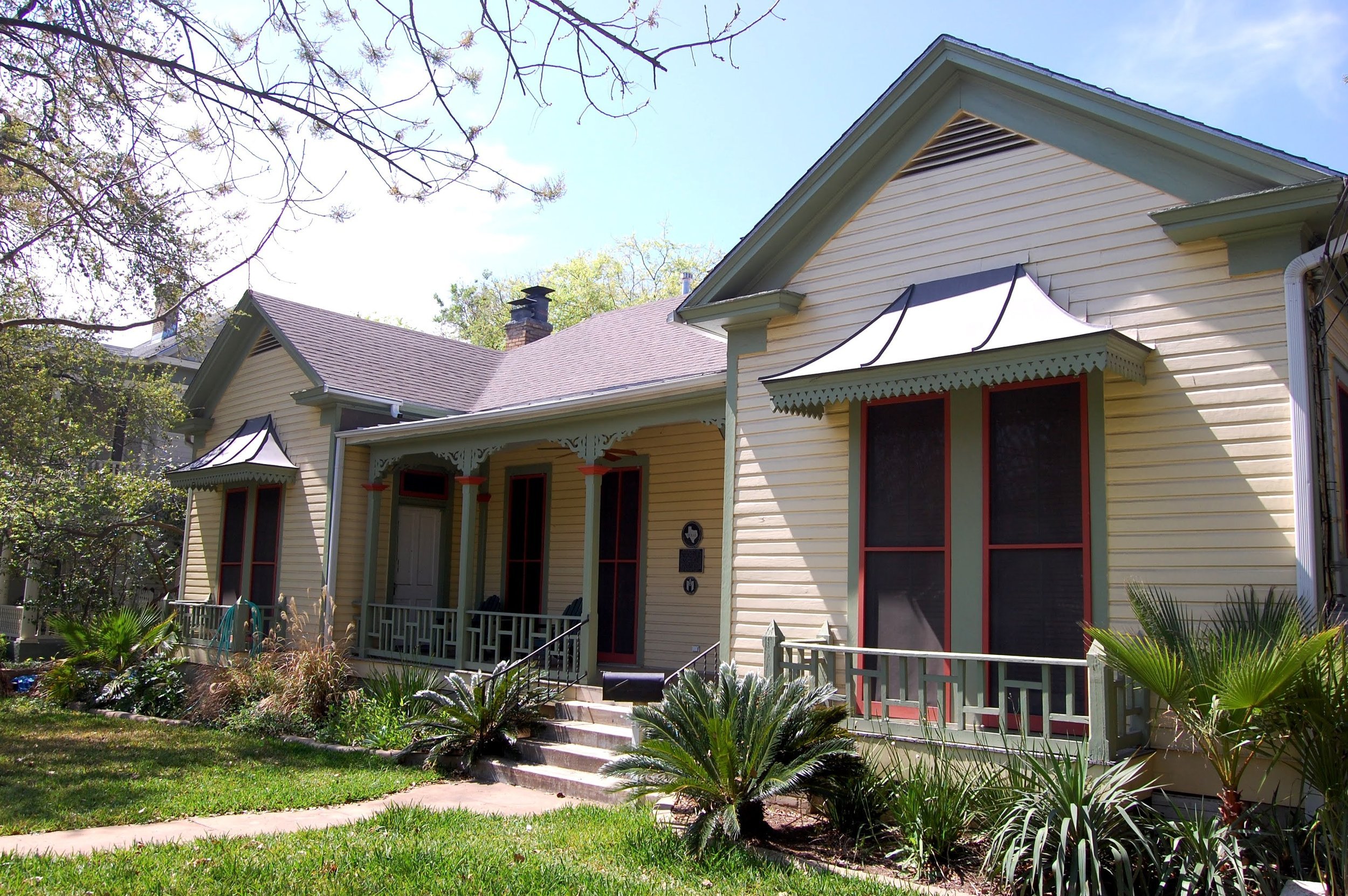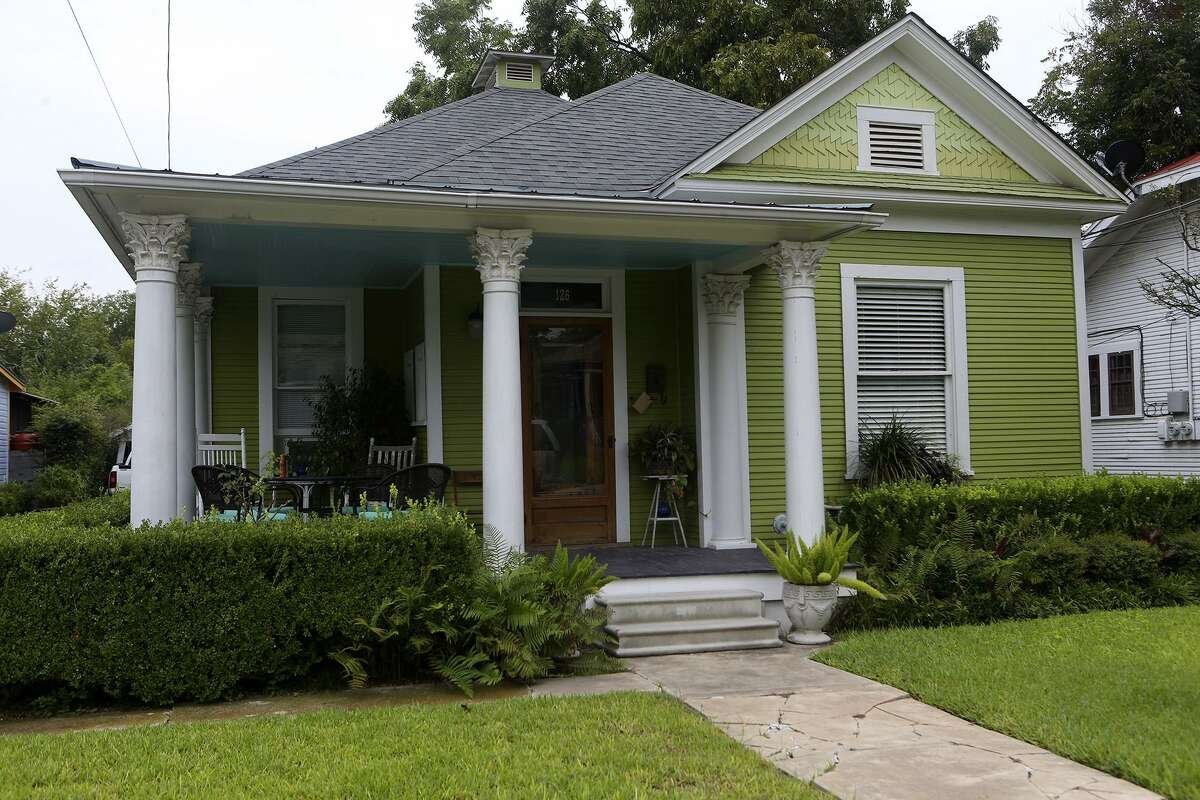Tool Time on TAP – Part 1: Home Repair
Willie Wells House, Bouldin Creek
This is the first in a three-part series where we’ll share an in-depth look at some of the tools recommended in our Urban Land Institute Technical Assistance Report on Preservation, Affordability, and Anti-Displacement, co-sponsored by Preservation Austin with the City of Austin Department of Housing & Planning. The report provides recommendations for new tools, programs, and policies to preserve older and historic housing stock while addressing our city's growing affordability crisis. With this series, we hope to demystify some of the tools discussed in the report and provide greater context and understanding of how they can work in Austin.
Read the report and its recommendations in full at the link below.
Based on a recent afternoon spent in the waiting room of my doctor’s office, there’s no shortage of home improvement shows, whether “Fixer Upper” with its farmhouse chic, or “Flip or Flop” with its buy, renovate, and resell model. Despite the range of choices, however, I don’t know of a single show that helps the average homeowner or renter navigate home repair programs, the ones offered by the local, state, and federal government to fund critical fixes such as roof leaks or broken pipes.
And these programs are essential; for the income-eligible residents they target, they can mean the difference between remaining at home or having to move out. That’s why a recent panel sponsored by Preservation Austin, the City of Austin’s Displacement Prevention and Historic Preservation Offices, the Urban Land Institute (ULI), and the Terwilliger Center for Housing is so important. The officially named “Technical Assistance Panel” (TAP) held interviews with stakeholders to discuss the challenges of preserving historic-age housing (50 years and older), maintaining affordability, and slowing displacement in the midst of Austin’s historic growth.
The resulting TAP report recommended policies and tools to meet the challenge, including promoting the City of Austin’s home repair program. The TAP effort will also support the city’s ongoing Equity-Based Preservation Plan, which is tasked with protecting and preserving the City’s historic-age buildings and diverse cultural heritage. While there is no single solution to solving the affordability challenge, home repair is a tool that can help.
William Green Hill House, Castle Hill
Why is home repair important?
Home repair can help residents stay in their homes and thus avoid being displaced. In gentrifying neighborhoods, rising property taxes leave residents with less money for critical repairs to their homes, making them beyond repair. Those homes may in turn be demolished for new and more expensive construction, which affects neighborhood character and worsens the affordability crisis downstream. Further making the economic case for home repair, the 2018 UT Austin report on residential displacement notes that “repairing existing homes is generally a less expensive method of creating safe, affordable homeowner opportunities than building new affordable homes.”
In addition, research shows clear links between poor housing conditions and negative outcomes on residents’ physical and mental health. It’s literally better for your health to live in safe and secure housing. (No shingle, Sherlock!) Home modification, which is part of the home repair solution, helps elderly and disabled residents, often the very people who live in historic-age homes, stay safely and independently in their homes. Whether a homeowner needs an ADA-compliant entry ramp or widened doorways, these types of safety improvements are a key part of the anti-displacement/affordability/preservation tool kit.
Garcia House, Travis Heights
What programs does the City of Austin offer to income-eligible residents?
The City of Austin offers several programs addressing a range of home repair topics. Before we dive into the details, however, some hard facts bear mentioning. According to the TAP report, “the City’s current home repair program is drastically underfunded and therefore able to reach only a small number of homeowners each year.” In addition, the program can be complex for the average resident to navigate. Keeping that in mind, here are the available programs:
Architectural Barrier Removal:
Architectural barriers are physical elements of a home that can make it difficult to easily enter, leave or move around your home. Modifications to address these barriers include replacing stairs with ramps, removing bathroom barriers, widening doors, and upgrading doorknobs. Eligible homeowners and renters can receive up to $20,000 for improvements, subject to landlord approval and requirements related to residence within the city limits, age and/or disability, and income level.
The GO REPAIR! Grant Program helps Austinites fix dangerous conditions such as collapsing floors, decaying roofs, faulty wiring, and plumbing leaks. Austin nonprofits administer the grants and repairs; the grants go up to $20,000. Homeowners are subject to eligibility requirements related to residence within the city limits and income level.
Minor Home Repair Grant Program:
The Minor Home Repair Program helps eligible homeowners and renters address health or safety hazards. The repairs address conditions such as leaking gas pipes, faulty wiring, decaying roofs, and collapsing floors. Grants go up to $5,000 per home and are subject to landlord approval and requirements related to residence within the city limits, age and/or disability, and income level.
The Plumbing Program assists households with repairs to toilets, showers, sinks/faucets/drains, water heater installation, Ground Fault Circuit Interrupters (GFCI) installation, front-yard water service lateral replacement, P-traps, and anti-siphon devices. (All of that makes me sound really smart.) Austin nonprofits administer the grants and repairs; the grants go up to $15,000. Eligibility requirements include residence within the city limits, single-family home or duplex, primary place of residence, and income level.
Home Rehabilitation Loan Program:
The Home Rehabilitation Loan Program provides 0% interest loans up to $75,000 for repairs to the foundation, roof, plumbing, HVAC, windows, and electrical, major interior and exterior repairs, and complete rehabilitation of the home, with reconstruction if necessary. Eligibility requirements include location within the city limits, single-family detached home, primary place of residence, ownership of the property with clear title, no recent bankruptcy (two-year window), and income level.
Private Lateral Lines Grant Program:
A private sewer lateral line is the portion of the wastewater service line located on your property that connects your house to the City wastewater main. The Housing & Planning Department provides free replacement or repair of these lines if the lines break or become defective. Eligibility requirements include a notice from the Austin Water Utility, residence within the city limits or limited purpose annexed (LPA) or Extra Territorial Jurisdictions (ETJ) areas, single-family home or duplex, primary place of residence, and income level.
Who Else Has Home Repair Programs?
Several of our neighbors have similar programs, including San Antonio and San Marcos. Travis County also assists with repairs, but there is a waiting list. An online clearinghouse of grants for home repairs in Texas lists local, state, and federal opportunities, and another source lists Texas programs geared specifically toward seniors.
Other regions have also established home repair programs. In Buffalo, New York, a non-profit home repair program has helped homeowners fix and maintain 310 units, targeting senior homeowners, developmentally disabled residents, and others. A Detroit initiative has helped income-eligible homeowners address major safety-related repairs. In Milwaukee, the STRONG Homes Loan Program funds home repairs, and the Compliance Loan Program helps homeowners address code violations.
San Antonio, Lavaca Historic District (Image: John Davenport, San Antonio Express News)
Indian Village Historic District, Detroit (Image: Karlest Ford)
New York State recently unveiled new funding for home repairs to serve veterans and seniors. Pennsylvania, which has some of the oldest housing stock in the country, just approved funding for its Whole-Home Repairs Program, a one-time influx of funds targeted to low-income residents. Philadelphia has a Basic Systems Repair Program for emergency repairs, a Built to Last program, which is a collaboration to restore homes to safety and energy efficiency, and the nonprofit Rebuilding Together Philadelphia, which provides no-cost home repairs to seniors and low-income residents. Los Angeles County offers a suite of programs, while the City of Seattle offers loans and grants. All of these initiatives and many others are changing lives and communities, but complexity, lack of funding, and “Catch-22” situations sometimes make them difficult to access and can be barriers to greater success.
Going Forward
Given the affordability crisis in Austin, we need to use all the tools in our toolbelt, including home repair. By helping homeowners and renters repair their homes, stay in place, and live safely and independently, robust home repair programs are a critical piece of the anti-displacement, affordability, and historic preservation trifecta.
Now that’s a show I’d flip for.





